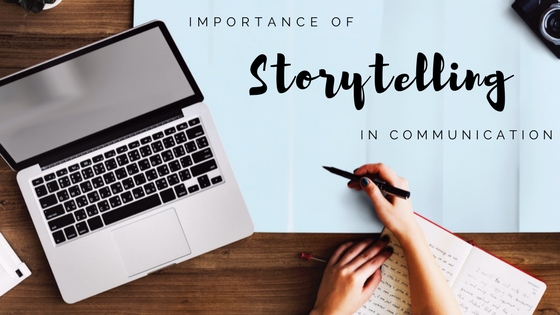Hi, I’m Prof. Pamposh Gulati and I teach Journalism, Media, and Communication at IILM University.
Do you know? The stories we tell create the world we live in.
To be able to communicate effectively is perhaps the most important of all life skills because it facilitates passing information to others and helps us understand what is said to us. The ability to communicate information precisely, lucidly and as intended, is a fundamental life skill and something that should not be ignored.
Storytelling is a two-way interaction, between someone telling a story and one or more listeners. It is a well-known and powerful means of communicating messages and engaging audiences. For eras, storytelling to communicate has been used very effectively. From the original cavemen to our ancestors and now to businesses and marketers, storytelling is a valued tool. It is an art form with a purpose to educate, stimulate and communicate thoughts, expressions and ideas. Storytelling typically follows a structure that defines the cause-and-effect relationships between events that take place over a particular period and that impact a range of individuals.
Storytelling is likely to generate a shared understanding among people about a situation, a topic or a problem. The more a story is engaging, the more it has the potential to attract and sustain the interest of the audience perpetuating meaningful connections. One thing is clear that people connect with a story, and a story takes people on a journey. Whether it’s a journey to your childhood home or a journey to a life-changing truth, it’s a story that will eventually take you there.”
Human beings are wired for stories. With the evolvement of technology and communication, its become imperative to communicate succinctly through all channels. However, this isn’t always so easy. Although one might think that with so much new technology, communication has become easier, but actually, all it’s done is to reinforce the need to perfect the classic communication methods. One being, storytelling. Engaging communication through storytelling has several perks. But why you should use it? To express your vision.
Storytelling techniques are common for individuals, groups, companies, and large organisations. Let’s discuss briefly some important techniques:
- Make your stories friendly: Friendly stories are great as they get the listeners into a state of mind, which is full of positivity and hope; leaving a great impact on their minds.
- Emotional: A story that garners strong emotion is one that will last the longest in the minds of the listeners.
- Bring your characters to life: Characters are the heart of any story. Their affluence and hardships are what makes people want to laugh, cry or rejoice. To do this, you must provide enough detail to bring the character to life in the minds of your audience.
- Inclusive: A story which allows the listener to feel as though they’re in the story themselves is the kind of story which is the most effective. Imagining ourselves as the protagonist always feels good na..
- Relevant: Relevancy is key when communicating with your audience. A witty story can make people feel good, however, it may not relate to the central message you want to convey. This is why when you use storytelling to communicate, the message has to bring into line with the story, dovetail, or at least circle back.
At IILM University, storytelling is an integral subject of journalism, media and communication. Digital storytelling is different from traditional print journalism. As mobile and i-pads become the default device and visuals overtake text, journalism has definitely come of age. Navigation is based on tap and swipe, video commands attention, graphics and quotes communicate better than a copy. Storytelling is both an art and a science. Some pieces are inherently in you — copywriting and creativity — that can be fostered and sharpened. The undergraduate course in Journalism, Media, and Communication at IILM University is the preferred destination for students looking to immerse themselves in this dynamic and exciting industry. We understand that the performative and very practical nature of journalism suggests that journalism skills development is most effective when approached through a learning-centred approach to curriculum. Therefore, our pedagogy is all about experiential learning. Our curriculum is based on the concept of “Doing it for Real”; therefore, we teach in a designing experiential journalism and media curriculum that prepare students for the new and uncertain world.
If you like what you’ve heard on this podcast, I invite you to leave us a comment or review.





